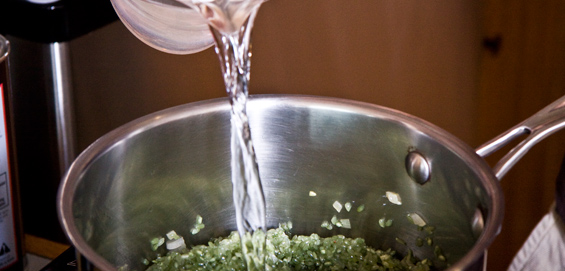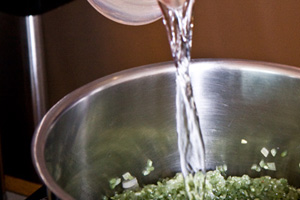THE PILAF METHOD OF COOKING RICE
When professional chefs cook rice, they often do it using specific methods that may help the home chef achieve better tasting and better-looking results.
Perhaps the most well-known is the risotto method, which results in a soft, delightfully oozing and rich rice dish called a risotto. The texture of the risotto is achieved by using a high-starch rice (such as Arborio or Carnaroli rice) and slowly introducing controlled amounts of hot chicken stock to it while stirring to draw that starch out.
Another common method is referred to in many culinary schools as “the pilaf method.” Use this method if you are looking for rice with distinct grains that fluff up very nicely. It’s a great way to showcase the beautiful colors and distinct textures of many specialty rice varieties, and delivers particularly stunning results when used with colored rice varieties like green bamboo rice and Chinese black rice.
DIRECTIONS




Ways to make your pilaf more interesting:
- Add a bay leaf when you pour in the liquid. It will impart flavor and should be sitting on top of the rice waiting for you to pull it out (having floated up as the rice cooked) when you take the lid off.
- Add different vegetables at the beginning. Bell pepper, carrot, celery, garlic, shallots, or scallions can all be added to the pot at the same time as the onion (and should be cut as small as, or smaller than, the onion).
- Toss the finished rice with ingredients you want raw or have cooked separately: peas, raisins, spinach, chopped nuts, etc.
- For added richness, stir extra butter into the finished rice while it is still hot.
Browse More:
Rice Recipes
Culinary Techniques



Comments 3
Pingback: Goat Cheese Quinoa Cakes « Dora's Table
Pingback: Goat Cheese Quinoa Cakes « Dora's Table
Pingback: Goat Cheese Quinoa Cakes | Dora's Table